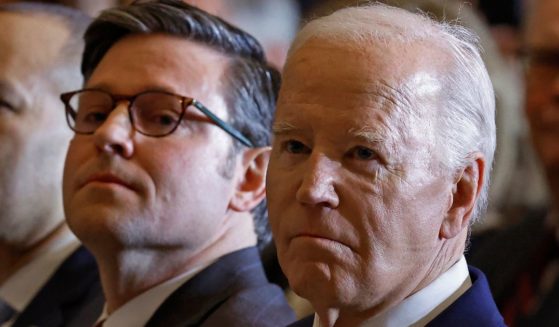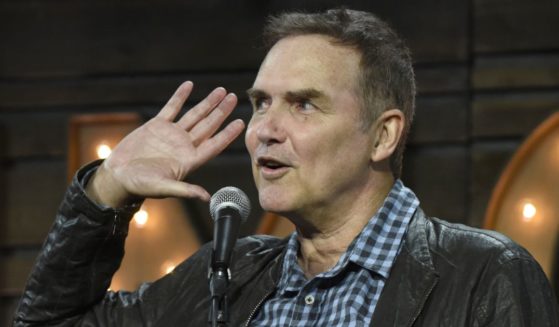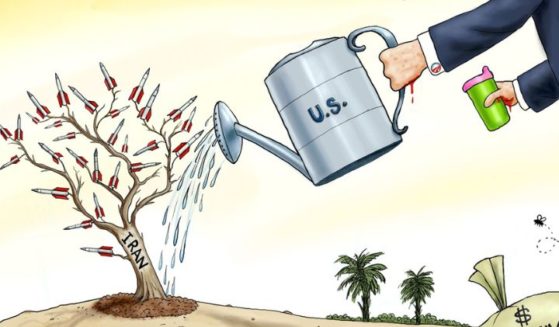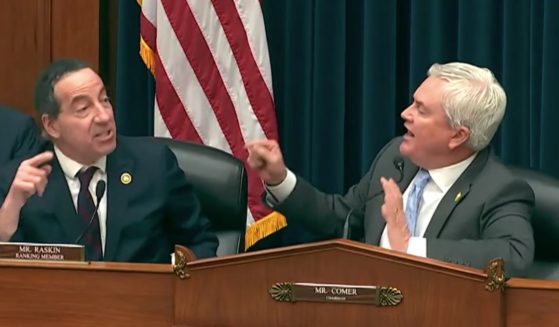Data Shows Number of Poor Decreasing, Rich Increasing -- Proves Leftists Are Lying
You’ve heard it before and you’ll hear it again — the whining from liberals about the “shrinking middle class.”
Once despised by the left as the vanguard of the bourgeoisie, we’re now told by liberals that the middle class is the only class we should be worried about. When it comes to the upper class, we should be talking about how to tax and penalize them back into the middle class for the sake of equality. When talking about the lower class, we should be looking at how to get them into the middle class by any means necessary.
Apparently, the relative size of the middle class is the only possible augury we should look at when we consider any economic policy.
This argument actually seems fairly persuasive to many normally apolitical Americans. Upon examination, however, it becomes clear that for all their talk about equality, the left glosses over the fact that nearly twice as many Americans have left the middle class to go to upper-income groups as have dropped out of it because of lower income. In short, the left is lying.
Take a 2016 report from The Washington Post, which was analyzed by the Cato Institute when it was published. The Post’s language made the problem sound like a stark blight upon the face of the United States.
“The great shrinking of the middle class that has captured the attention of the nation is not only playing out in troubled regions like the Rust Belt, Appalachia and the Deep South, but in just about every metropolitan area in America, according to a major new analysis by the Pew Research Center,” the article, penned by Emily Badger and Christopher Ingraham, read.
That certainly sounds pretty serious, especially with that “major new analysis” part. It also hits all of the pinball bumpers that immediately activate liberal sympathy. Rust Belt! Appalachia! Deep South! And just when this sounds like a veritable Walker Evans photograph distilled into a sentence, they mention “every metropolitan area in America.” Translation: cities, home of the Democrat base. Time for action!
“Pew reported in December that a clear majority of American adults no longer live in the middle class, a demographic reality shaped by decades of widening inequality, declining industry and the erosion of financial stability and family-wage jobs,” the piece continued.
“But while much of the attention has focused on communities hardest hit by economic declines, the new Pew data, based on metro-level income data since 2000, show that middle-class stagnation is a far broader phenomenon.”
However, the “far broader phenomenon” at work here may actually be the inveterate talent of Post writers at burying important information so deep inside the story that most low-information Democrats — who still haven’t read far enough to figure out whether he ends up eating the green eggs and/or the ham — probably miss it.
In this case, it’s in the eighth and ninth paragraphs of the story: “But in other places, the shrinking middle class is actually a sign of economic gains, as more people who were once middle class have joined the ranks at the top,” Badger and Ingraham wrote. “This has been the case in booming energy hubs like Midland, Texas.”
“In the Washington, D.C. metropolitan area, the share of adults living in lower-income households has actually held steady over this time. The households disappearing from the middle-class, rather, are reflected in the growing numbers at the top (this does not mean, though, that the same middle-class families are necessarily becoming wealthier; changes in the population makeup of the region may also reflect who moves away from the area and who migrates in).”
Nice caveat there. And while that spiel was buried until eight paragraphs in, some key statistics that would have killed their narrative entirely were still completely omitted from the piece. Thankfully, Chelsea Follett over at the Cato Institute managed to provide a quick corrective.
“According to the Pew Research Center, 11 percent fewer Americans were middle class in 2015 than in 1971, because 7 percent moved into higher income groups and 4 percent moved into lower income groups,” she wrote. “The share of Americans in the upper middle and highest income tiers rose from 14 percent in 1971 to 21 percent in 2015.”
That’s right, nearly twice the number of people who moved out of the middle class moved up instead of down. The number of people in the upper-middle and top-income tier increased by 50 percent over a period of 44 years.
That becomes even more striking when you look at data from 1979. According to Human Progress, 13 percent of Americans were in the top earning groups then, as opposed to the 48 percent who were lower-income or poor. Thirty-nine percent were in the middle at the time. In 2014, 35 years later, 31 percent were high-income, 32 percent middle and 37 percent in lower-income strata. That’s an 18 percent shift into upper-income bands and an 11-point shift away from lower-income groups.
That should be amazing news. If any other developed country had that kind of economic shift over the same period of time, its media would literally be doing cartwheels.
Instead, what do we get from the liberal media? Mournful pieces about inequality and prose that seems to warn against the metastasis of Appalachia. And not just from fringe liberal blogs, but also from what’s supposed to be one of America’s newspapers of record.
Oh, and as for that middle class that the liberal media cares so much about? They’re doing fine. As of 2015, they still represented 50 percent of American households. They’re also able to afford goods and services nobody could have dreamed of in 1971.
I remember my first television was a 13-incher, purchased with an Atari ST computer in 1988. The computer cost about a $1,000 despite the fact that it had one megabyte of ram and no hard drive. The television was another few hundred dollars.
As I write this, I have a seven-inch phone in my wallet that has 2,000 times the RAM of the ST and 64 gigabytes of storage. If I wanted to, I could access nearly any movie I’ve ever watched almost instantaneously on it, plus a trove of user-created content on YouTube that never could have existed 20 years ago.
Thanks to services like Uber, I can use it to summon a car to go anywhere I want whenever I want. And what’s more, pretty much everyone can not only afford this phone (which costs far less than just the Atari computer cost) but use it easily (something you definitely couldn’t say about the Atari ST).
That’s a minor part of the story, but an important one. We live in the greatest country on earth at a time when our wealth allows us to obtain better goods and services than ever before. More of us are wealthy. We have access to medical treatments that have rendered dread diseases like cancer and HIV/AIDS manageable and less serious conditions completely harmless. We have access to cheap jet travel and on-demand car service at the touch of a button. The middle class lives in a way that even millionaires 50 years ago would be desirous of.
Yet, The Washington Post and its ilk can’t bring themselves to celebrate this. They would only be happy if no one ever dropped out of the middle class — and if that’s not the case, they’ll sit around and mewl about it. Forget the actual statistics that Americans are becoming more and more wealthy. Forget the fact that the wealthiest among us half a century ago would envy the average Joe today. The important thing is, does the average Joe have anyone he can envy?
If so, well, America itself has somehow failed. Whenever the liberal media talks about the economy, the end goal always has to be seen as equality of outcome, even if the economic news is, on balance, good — and if we’re not moving in that direction, then there’s something seriously wrong to them, no matter how many people are more wealthy than there were four decades ago.
So, the next time one of your liberal acquaintances decides to prattle on about “widening inequality, declining industry and the erosion of financial stability and family-wage jobs,” give them the real facts — Americans are better off, richer and have a better quality of life than they ever did before. Anyone who says otherwise is uninformed at best and ignoring the facts at worst.
Truth and Accuracy
We are committed to truth and accuracy in all of our journalism. Read our editorial standards.












